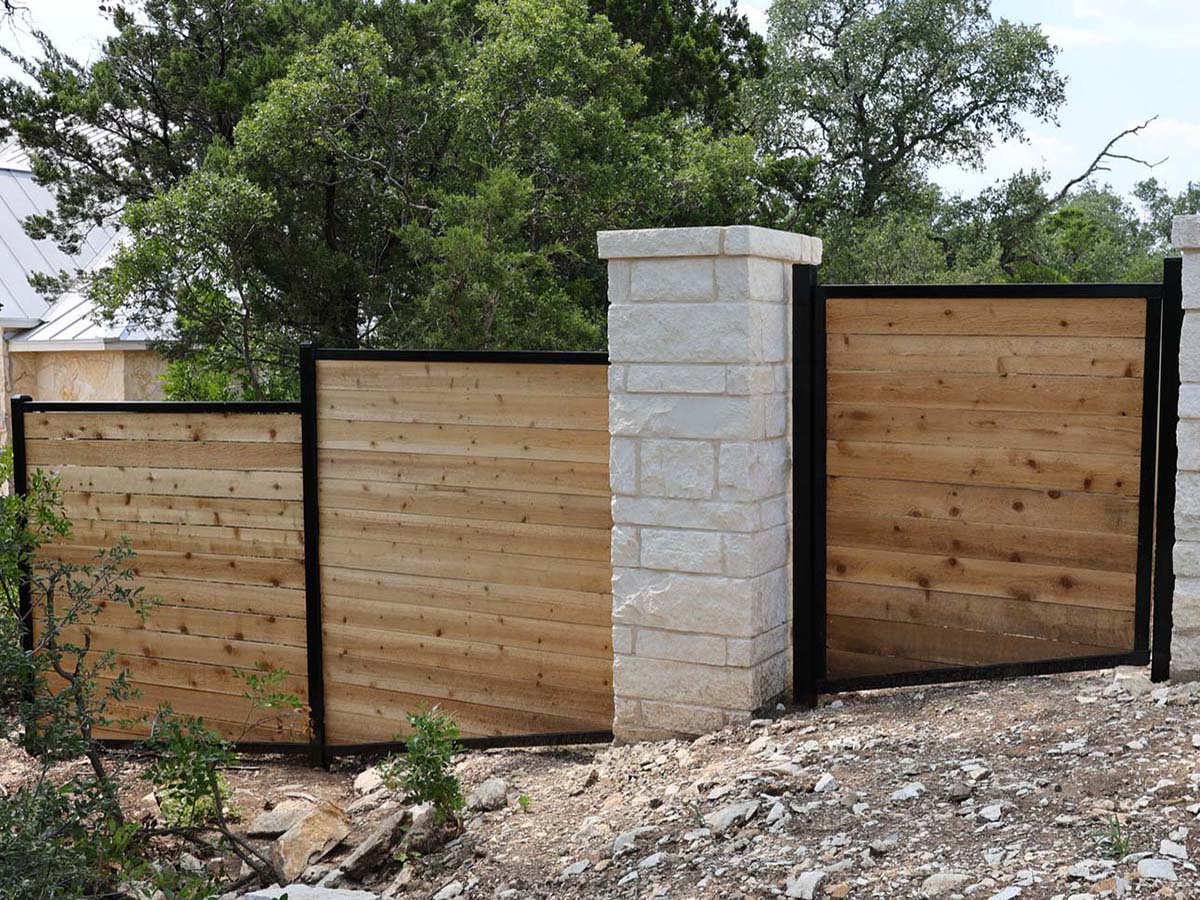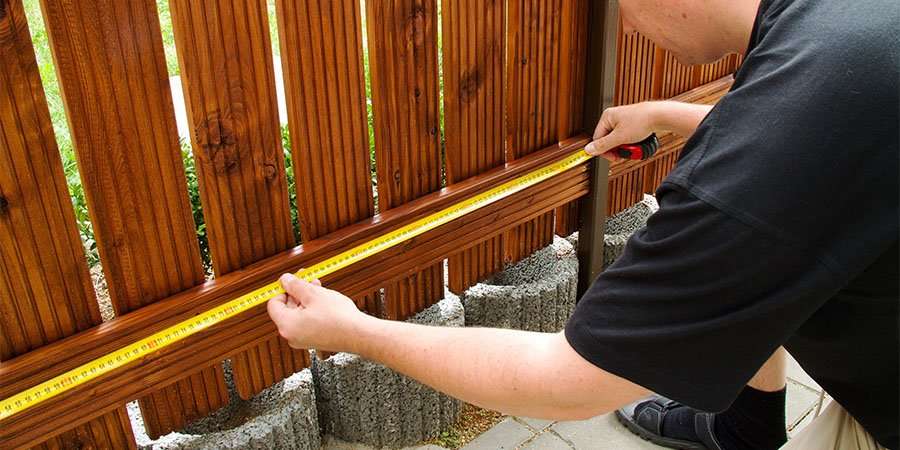All Categories
Featured
Your fence is an investment that provides protection, curb, and personal privacy allure. To keep it in exceptional shape, normal maintenance customized to its material is essential. Each fencing type has unique upkeep requires based on its material's durability, exposure to the components, and other aspects. Right here's an extensive guide to maintaining different fence materials.
![]()
Weather Condition Defense: Apply a top quality sealant or stain every 2-- 3 years to secure the timber from wetness and UV rays. For extreme environments, yearly reapplication may be needed. Cleansing: Make use of a yard hose or a pressure washer on a low setting to eliminate dirt and mildew. Adhere to up with a light detergent for persistent spots. Repairs: Look for loose or rotting boards and change them quickly. Tighten up screws or nails to maintain the structure stable. Insect Control: Use termite-resistant timber or deal with the fence with parasite repellents to stay clear of problems. 2. Plastic Fencings. Vinyl fences are popular for their toughness and very little upkeep needs.
Cleansing: Wash the surface with a garden hose or a mixture of soap and water to eliminate dust and algae. For tough spots, use a vinyl-specific cleanser or a soft-bristle brush. Examinations: Consistently examine for splits or warping, especially after solid winds or heavy influences. Repair work: Replace any kind of damaged sections right away. Vinyl fences usually make use of modular parts, making repairs uncomplicated. 3. Chain-Link Fences. Chain-link fencings are tough and economical yet require regular interest to avoid rust.
Corrosion Elimination: Utilize a wire brush to get rid of corrosion from exposed locations, after that use a rust-inhibiting spray to secure the steel. Cleansing: Hose down the fencing frequently to remove dust. For gunk, use soapy water and a stiff-bristle brush. Repair work: Tighten any drooping sections or change harmed web links to maintain safety and security. 4. Wrought Iron Fences. Wrought iron fences offer longevity and sophistication but are prone to rust if not correctly preserved.
![]()
Rust Prevention: Remove corrosion spots with sandpaper and apply a rust-resistant primer adhered to by outdoor metal paint. Evaluate for rust a minimum of two times a year. Cleaning: Clean down with a fabric and soapy water to maintain the coating. Prevent rough cleaners that can harm the surface area. Painting: Repaint every few years to secure the metal from deterioration and maintain it looking fresh. 5. Aluminum Fences. Light weight aluminum fencings are light-weight, long lasting, and immune to corrosion, needing less upkeep compared to wrought iron.
Cleansing: Clean with soap and water to get rid of dirt and dust. Wash extensively to avoid residue. Evaluations: Look for loosened equipment or damages, specifically after tornados. Secure or change parts as needed. Touch-Ups: Apply paint to scraped or damaged areas to stop damages to the safety layer. 6. Compound Fences. Composite fences are made from a mix of wood and plastic, incorporating sturdiness with marginal upkeep.
![]()
Cleansing: Utilize a tube or a soft brush with soap and water to clean up the surface. Prevent making use of harsh chemicals. Assessments: Look for warping, specifically in extreme warm. Tighten up or change any kind of broken panels. Mold Avoidance: While composite materials withstand rot, keep the fence completely dry and clean to stay clear of mold buildup. 7. Bamboo Fences. Bamboo is an eco-friendly alternative however calls for cautious upkeep to preserve its look and longevity.
Securing: Apply a protective sealant or varnish every 2-- 3 years to defend against moisture and UV damage. Cleansing: Clean with moderate soap and a soft sponge or brush. Avoid high-pressure washing, which can damage bamboo fibers. Repair services: Replace damaged posts or areas to maintain architectural integrity and look. General Upkeep Tips for All Fencing Types. Routine Inspections: Check your fence a minimum of as soon as every season for damage, wear, or loose parts. Cutting Plants: Keep shrubs, plants, and creeping plants away from the fence to stop wetness damages and decrease pest activity. Seasonal Changes: In regions with snow, stay clear of stacking snow versus your fencing to stop architectural anxiety. In warm environments, check for heat-related warping or fading. Verdict. Each fence product has its unique maintenance requirements, yet an aggressive technique to care can expand its lifespan and keep it looking its finest. Wooden fencings require more focus contrasted to plastic or aluminum, but each material gain from routine cleansing, assessments, and timely fixings. By customizing your maintenance practices to the sort of fencing you possess, you'll make sure that it remains to supply aesthetic, personal privacy, and safety and security appeal for several years to come.

- Wooden Fences. Wooden fences are valued for their all-natural look however need consistent maintenance to stop damage.
Weather Condition Defense: Apply a top quality sealant or stain every 2-- 3 years to secure the timber from wetness and UV rays. For extreme environments, yearly reapplication may be needed. Cleansing: Make use of a yard hose or a pressure washer on a low setting to eliminate dirt and mildew. Adhere to up with a light detergent for persistent spots. Repairs: Look for loose or rotting boards and change them quickly. Tighten up screws or nails to maintain the structure stable. Insect Control: Use termite-resistant timber or deal with the fence with parasite repellents to stay clear of problems. 2. Plastic Fencings. Vinyl fences are popular for their toughness and very little upkeep needs.
Cleansing: Wash the surface with a garden hose or a mixture of soap and water to eliminate dust and algae. For tough spots, use a vinyl-specific cleanser or a soft-bristle brush. Examinations: Consistently examine for splits or warping, especially after solid winds or heavy influences. Repair work: Replace any kind of damaged sections right away. Vinyl fences usually make use of modular parts, making repairs uncomplicated. 3. Chain-Link Fences. Chain-link fencings are tough and economical yet require regular interest to avoid rust.
Corrosion Elimination: Utilize a wire brush to get rid of corrosion from exposed locations, after that use a rust-inhibiting spray to secure the steel. Cleansing: Hose down the fencing frequently to remove dust. For gunk, use soapy water and a stiff-bristle brush. Repair work: Tighten any drooping sections or change harmed web links to maintain safety and security. 4. Wrought Iron Fences. Wrought iron fences offer longevity and sophistication but are prone to rust if not correctly preserved.

Rust Prevention: Remove corrosion spots with sandpaper and apply a rust-resistant primer adhered to by outdoor metal paint. Evaluate for rust a minimum of two times a year. Cleaning: Clean down with a fabric and soapy water to maintain the coating. Prevent rough cleaners that can harm the surface area. Painting: Repaint every few years to secure the metal from deterioration and maintain it looking fresh. 5. Aluminum Fences. Light weight aluminum fencings are light-weight, long lasting, and immune to corrosion, needing less upkeep compared to wrought iron.
Cleansing: Clean with soap and water to get rid of dirt and dust. Wash extensively to avoid residue. Evaluations: Look for loosened equipment or damages, specifically after tornados. Secure or change parts as needed. Touch-Ups: Apply paint to scraped or damaged areas to stop damages to the safety layer. 6. Compound Fences. Composite fences are made from a mix of wood and plastic, incorporating sturdiness with marginal upkeep.

Cleansing: Utilize a tube or a soft brush with soap and water to clean up the surface. Prevent making use of harsh chemicals. Assessments: Look for warping, specifically in extreme warm. Tighten up or change any kind of broken panels. Mold Avoidance: While composite materials withstand rot, keep the fence completely dry and clean to stay clear of mold buildup. 7. Bamboo Fences. Bamboo is an eco-friendly alternative however calls for cautious upkeep to preserve its look and longevity.
Securing: Apply a protective sealant or varnish every 2-- 3 years to defend against moisture and UV damage. Cleansing: Clean with moderate soap and a soft sponge or brush. Avoid high-pressure washing, which can damage bamboo fibers. Repair services: Replace damaged posts or areas to maintain architectural integrity and look. General Upkeep Tips for All Fencing Types. Routine Inspections: Check your fence a minimum of as soon as every season for damage, wear, or loose parts. Cutting Plants: Keep shrubs, plants, and creeping plants away from the fence to stop wetness damages and decrease pest activity. Seasonal Changes: In regions with snow, stay clear of stacking snow versus your fencing to stop architectural anxiety. In warm environments, check for heat-related warping or fading. Verdict. Each fence product has its unique maintenance requirements, yet an aggressive technique to care can expand its lifespan and keep it looking its finest. Wooden fencings require more focus contrasted to plastic or aluminum, but each material gain from routine cleansing, assessments, and timely fixings. By customizing your maintenance practices to the sort of fencing you possess, you'll make sure that it remains to supply aesthetic, personal privacy, and safety and security appeal for several years to come.
Latest Posts
Transform Your Home with High Quality Flooring Solutions
Published Apr 19, 25
1 min read
Uncover the Montclare Difference - Expert Auto Maintenance
Published Apr 19, 25
2 min read
Elevate Your Home with Expert Exterior Siding Solutions
Published Apr 19, 25
2 min read